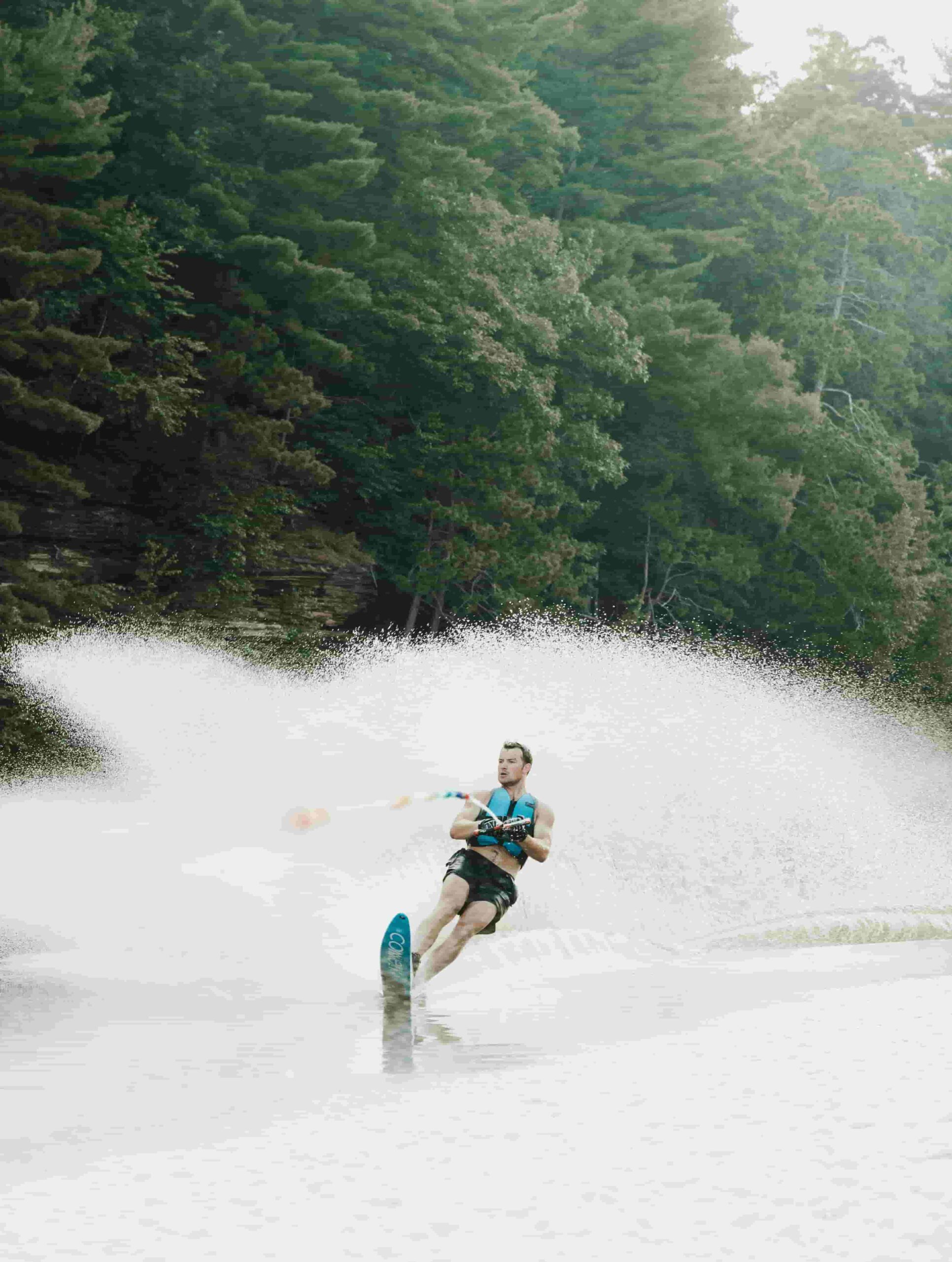Introduction:
Waterskiing is a captivating water sport that combines the thrill of speed with the exhilaration of gliding gracefully over the water’s surface. Whether you are a seasoned enthusiast or a curious beginner, the world of waterskiing offers an adrenaline-pumping experience that blends skill, technique, and sheer joy. In this comprehensive exploration, we will delve into the origins of waterskiing, the essential gear, techniques, safety measures, and the unique thrill that comes with skimming across the water behind a speeding boat.
History of Waterskiing:
The history of waterskiing dates back to the early 20th century when water enthusiasts began experimenting with various forms of water-based recreation. Ralph Samuelson, an adventurous American, is credited with being the pioneer of waterskiing. In 1922, on Lake Pepin in Minnesota, Samuelson successfully rode a pair of homemade skis while being towed by a motorboat, marking the birth of this exhilarating water sport.
Essential Gear:
Waterskiing requires specific gear designed to enhance performance, ensure safety, and provide an overall enjoyable experience. The fundamental equipment includes:
-
Skis: Modern waterskis are typically made from materials like fiberglass or carbon fiber, offering a balance between durability and flexibility. They come in various shapes and sizes, catering to different skill levels and styles of skiing.
-
Bindings: The bindings secure the skier’s feet to the skis and are adjustable for a comfortable fit. They are designed to release the skier’s feet in case of a fall to prevent injury.
-
Ropes and Handles: The tow rope is a crucial element, connecting the boat to the skier. Waterski ropes are specifically designed to provide minimal stretch, ensuring a consistent pull. Handles come in various shapes and sizes, allowing skiers to choose based on their preferences.
-
Life Jacket: Safety is paramount in waterskiing, and wearing a properly fitted life jacket is mandatory. It provides buoyancy and protection in case of a fall.
-
Wetsuit: In colder waters, a wetsuit helps maintain body temperature and provides buoyancy. It also offers protection against abrasions and the impact of falls.
Techniques and Styles:
Waterskiing encompasses various styles and techniques, catering to a wide range of skill levels and preferences. Here are some popular waterskiing styles:
-
Slalom Skiing: In slalom skiing, the skier navigates through a course of buoys while being towed by the boat. The course is designed with a series of gates, and the skier aims to pass as many buoys as possible at increasing speeds.
-
Trick Skiing: Trick skiing involves performing a series of acrobatic maneuvers on a specially designed trick ski. Skiers execute spins, flips, and jumps, showcasing their agility and creativity.
-
Jump Skiing: Jump skiing is all about launching off a ramp and soaring through the air. Skiers build speed and then hit the ramp, attempting to achieve maximum distance while executing stylish jumps.
-
Barefoot Skiing: As the name suggests, barefoot skiing involves skiing without traditional skis, using only the feet. This challenging style requires exceptional balance and skill.
-
Wakeboarding: Although distinct from traditional waterskiing, wakeboarding shares similarities and is often enjoyed by watersports enthusiasts. It involves riding a single board while being towed by a boat, using the boat’s wake for jumps and tricks.
- Discover the art of windsurfing with our exhilarating sports packages Bodybuilding and Bog snorkelling. Ride the wind, master the waves, and create memories that last a lifetime.
Safety Measures:
Waterskiing, like any water sport, involves inherent risks. Adhering to safety guidelines is crucial to ensure an enjoyable and accident-free experience. Here are some essential safety measures:
-
Life Jackets: Always wear a properly fitted life jacket. It provides buoyancy and ensures your safety in case of a fall.
-
Communication: Establish clear communication signals with the boat driver. Skiers and drivers should have a set of understood hand signals to convey messages, especially in emergencies.
-
Spotter: It’s essential to have a designated spotter on the boat who can communicate with the driver and keep an eye on the skier. The spotter ensures the skier’s safety and alerts the driver to any potential hazards.
-
Equipment Check: Before each session, thoroughly inspect all equipment, including skis, bindings, ropes, and handles. Ensure that everything is in good condition and properly adjusted.
-
Weather Conditions: Pay attention to weather conditions, especially wind speed and water currents. Avoid waterskiing in adverse weather, as it can pose significant risks.
-
Boat Speed: The boat’s speed plays a crucial role in the skier’s experience. Follow recommended speed guidelines based on the skier’s skill level and the style of skiing.
The Thrill of Waterskiing:
Waterskiing offers a unique blend of excitement, physical activity, and a connection with nature. The feeling of being pulled across the water’s surface, the wind rushing past, and the spray of water beneath your skis create an unparalleled sense of freedom. The thrill of waterskiing lies not only in conquering the physical challenges but also in the mental focus required to navigate the water with precision.
For beginners, the initial attempts may involve a few tumbles and falls, but the learning curve is part of the adventure. As skills progress, skiers can explore different styles and techniques, pushing their limits and experiencing the sheer joy of mastering the art of gliding across the water.
Conclusion:
Waterskiing is more than just a sport; it’s a dynamic and invigorating experience that allows individuals to connect with nature, challenge themselves, and enjoy the rush of adrenaline. From its humble beginnings on a Minnesota lake to becoming a global watersport phenomenon, waterskiing has evolved into a diverse and exciting activity for people of all ages.
As with any adventure sport, safety and responsible practices are paramount. By following established guidelines, using proper equipment, and being mindful of environmental conditions, waterskiing enthusiasts can fully embrace the thrill of the sport while ensuring a safe and enjoyable experience on the water. So, whether you’re a seasoned pro or a first-time skier, gear up, hit the water, and discover the exhilarating world of waterskiing.

